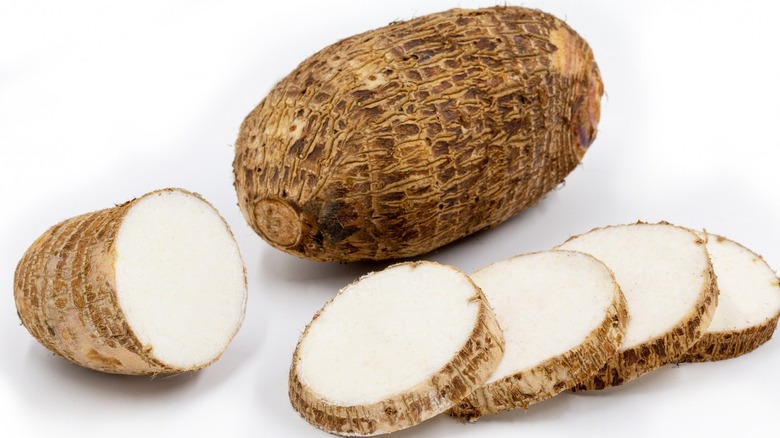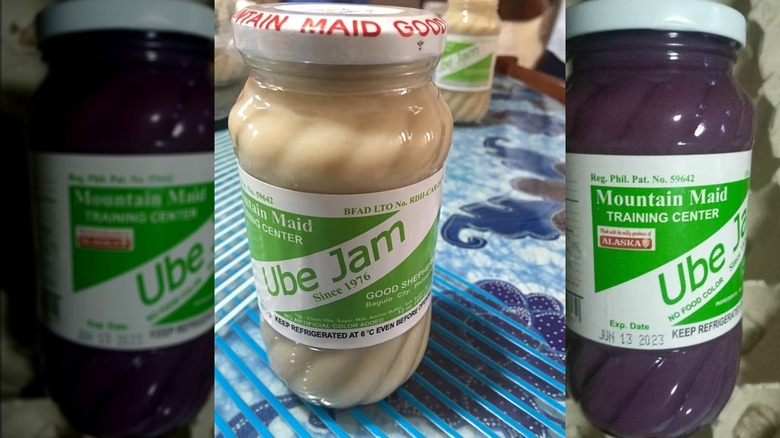Turns Out, Ube Isn't Always Purple
While ube may have been relatively unknown to most of us a decade ago, by the mid-20-teens this vegetable was starting to become trendy, particularly after a Miami bakery started selling gold-dusted $100 ube donuts to well-heeled hipsters. By now, it's so mainstream that Baskin-Robbins has come out with ube ice cream and Trader Joe's seems to have a never-ending stream of (more or less) ube-flavored items. Ube is popular not just for its sweet, vanilla-like flavor but also for the pretty purple color that makes it so Instagrammable.
But wait, stop the presses! While the ube-flavored products you see on store shelves might be particularly purplish, the vegetable itself isn't necessarily so colorful. As it turns out, there are several different varieties of ube, ranging from white to purplish-white all the way to deep purple. All of these different varieties are known and grown in the Philippines, but the white variety is commonly used in India where it also goes by the name of "white yam" and "Indian yam." Other names for the plant include "winged yam" and "water yam," but the genus and species are the same for both white and purple varieties of ube: Dioscorea alata.
Purple is photogenic, but white may be easier to grow
It's no wonder that the purple variety of ube was the one that caught the eyes of 20-teens trendspotters as the color is even more vivid than that of the lavender-hued taro. Still, it's possible that we might be seeing more of the white kind in the future, which is really no tragedy since the taste is the same. (Food color can always be employed in instances where appearance is everything.) As to why the white kind could become more widely known, it seems that in certain instances it may be easier to grow.
To illustrate, we bring you the curious case of the Good Shepherd ube brand. This product, which has been produced since 1976 by a convent in Baguio (the self-proclaimed "summer capital of the Philippines"), used to be purple, but in 2019 it went white. Nothing changed with the recipe except for the color of ube used –- according to a Facebook post by the Religious of the Good Shepherd, purple ube had been more difficult to grow (they blamed climate change) and as a result was in short supply. White ube, however, was still available and that's what they used to make their jam that season. While they reassured jam fans that the flavor was still the same as ever, by 2020 they were apparently able to source more purple ube and the jam returned to its former color and remains so at time of writing,

